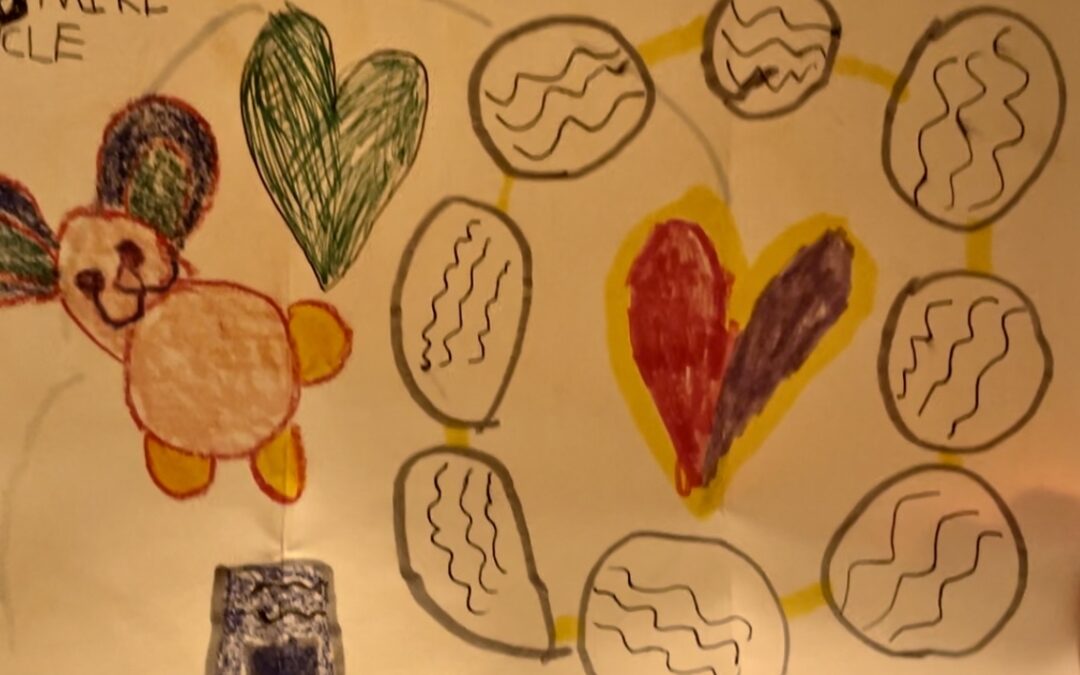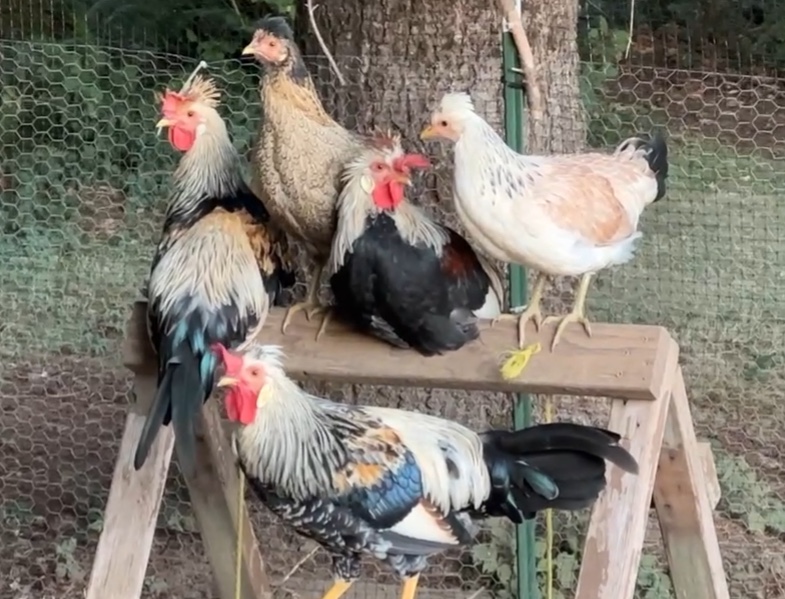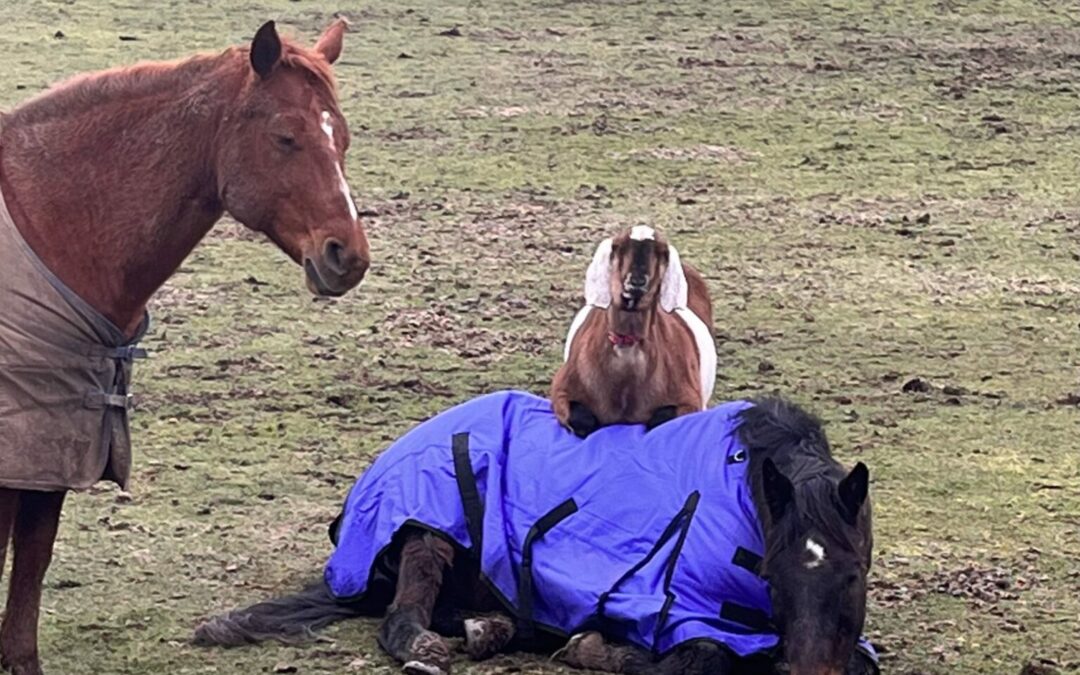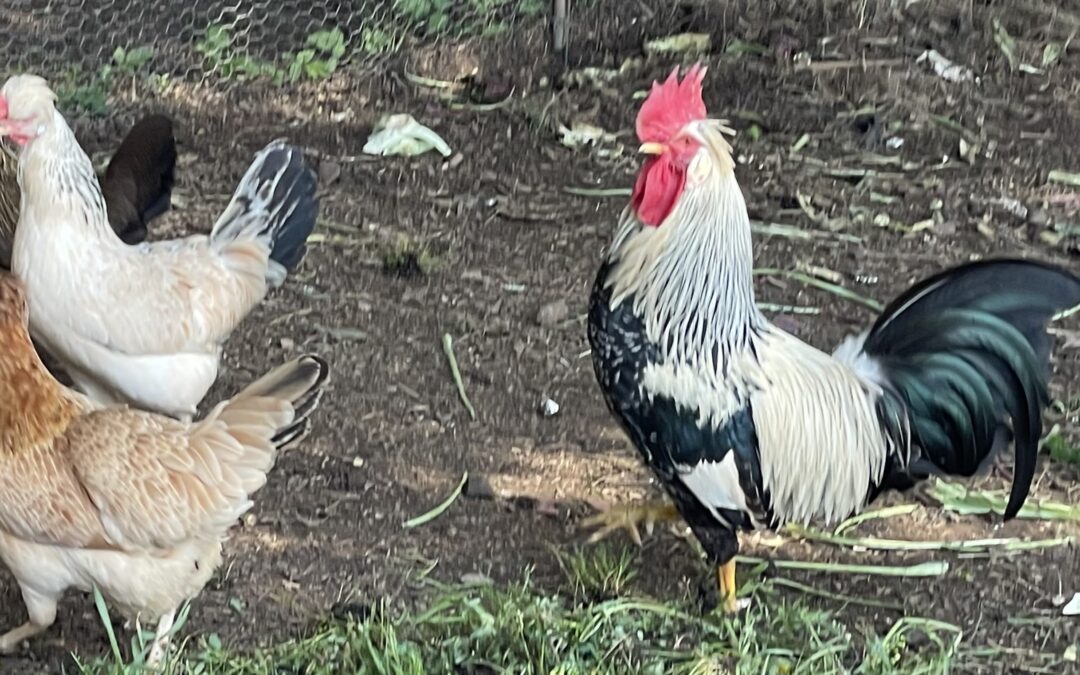
Bad Apples Spoil the Bunch?
Have you ever heard the phrase “One bad apple spoils the bunch”? Have you ever thought about why that is? I mean, if all the other apples are fine, why does one ruin it? Is this some extension of entropy, where the tendency of the universe moves toward disorder? I think about entropy a lot, especially when looking at my desk or my closet, and sadly I would say that both of those “systems” are constantly moving toward disorder. But I digress.
So, if one bad apple can spoil a bunch, could one good apple improve a spoiled bunch? Or put another way, could one human-friendly chicken improve a flock of human-scared chickens?
Yep, I just used entropy to talk about chickens. Didn’t think I could do that, did you? Anyway, here’s what is happening. As I’ve mentioned, I recently inherited three very sweet, human-raised chickens. Whenever I come up to the coop, they come running up to me. They get so close to me that I have almost stepped on them multiple times.
As you may recall, that is not the case with the chickens I raised myself. I walk into the coop and they scatter, some of them squawking bloody murder. I look at them and under my breath whisper, “Drama Queen Chickens.”
But since I have brought those three friendly chickens into the flock, my hens come running up to greet me alongside the three I inherited. It almost seems like their fear of me is starting to subside. I keep wondering if these three sweet hens are having a positive impact on my flock.
And then I started to think about my clients. Could one good hire transform a group of under-performing employees? How many Right People (people who fit the culture and consistently demonstrate the company’s core values) does it take to truly create a great culture? What is the tipping point where this change happens, if you don’t have it now? I think it depends on the organization, but the ultimate goal is to get to the point where 100% of your people are Right People in the Right Seat.
I don’t have a single client who doesn’t have a Wrong Person somewhere in the organization. When these people issues come up, I will ask the leadership team three questions: Do you want to Coach Them Up? Coach Them Out? Or Live With It?
It really is that simple. But if you choose to live with it, you could lose some of the Right People you already have, those who want to work for a company that sticks by its core values.
Recently, I had a client who filled a vacant leadership position with someone with a strong background in her field. Previously, the leadership team depended on the president to make most of the decisions, and while their performance was adequate (or marginal) it was not sustainable for growth. This new person came into the leadership team with a sense of ownership, focus and energy. She challenged everyone with her questions, owned her mistakes when she was wrong and put an incredible amount of energy into her department. Once the team got over the initial shock of working with someone with so much energy, they started to see what ownership looked like in action. In six short months, other members of the leadership team realized the importance of accountability and began to own their own seats. Finally, the few that resisted realized they had to decide: own their seat or leave. One year after the new hire came onto the leadership team, the entire team dynamics had changed. Collectively, the focus became performance, improvement and productivity, and the president began supporting his team members rather than directing them.
If you aren’t happy with the performance of your leadership team, or your organization, I’d encourage you to look at introducing some good apples into your bushel. You may be surprised at what an impact they can have on your entire organization. Need help taking that step? Send me an email! I’ll walk you through the process.




